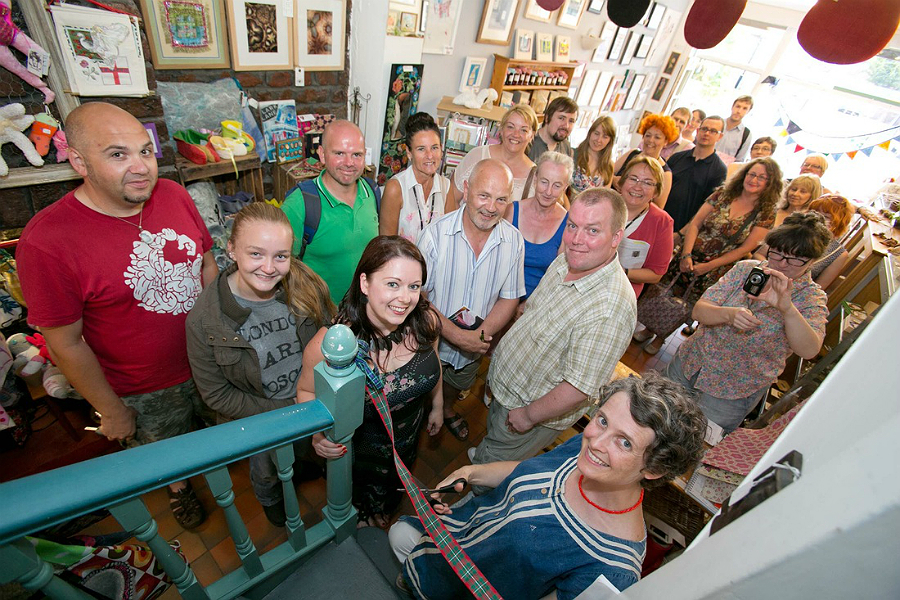Hope at ArtsHub47

At a time when the arts seem under constant threat, a Lark Lane exhibition reminds us of their potential to affect positive change, finds Conal Hughes…
There is no getting around the fact that spaces such as ArtsHub47 (Lark Lane) have a different feel to them than more traditional gallery spaces; what you have to admire about this creative community co-op though is that it knows it, and goes all out. Their latest exhibition, Hope, is an exploration of the art and poetry of members of the Everton-based Shaw Street project; set up for the training and support of homeless people.
Bunting and handmade cards and prints cover every space in the already small shop area – you could either be in craft heaven or suffer sensory overload. Filled with the artists, visitors and Shaw Street staff all chatting about the work and bathing in the atmosphere of a packed private view, it was somewhat sardine-like. Amid the jubilation, we came to the realisation that this was less about the art than it was about the people involved.
Garry Williams, 34, is a recovering alcoholic whose enthusiasm for the project was clear. Telling us he “couldn’t even draw a stick man” before starting the project, after only a few sessions he says he was hooked, and would spend his days thinking of ideas for the next creative project. He hopes to go to college to study mental health nursing in the near future.
Winner of the Liverpool Art Prize, Tabitha Moses (pictured), who formally opened the show, discussed the value of the exhibition, and mused that “having no art background allowed them to free”. The market for outsider art is increasingly in the ascendancy; exhibitions such as An Alternative Guide to the Universe at London’s Hayward Gallery pick up lots of media attention and elevate this subculture into a different realm.
Now we’re not saying that the Hayward is going to be knocking down the doors of this not-for-profit gallery; more that the public should stay open-minded about what it can inspire, both in the domains of creativity, day-to-day life, and the altered aspirations of those involved. The title of this exhibition is Hope, after all.
What was really inspiring about the show was the opportunity it represents, rather than the prospect of finding the next Van Gogh; to build people’s confidence, provide a chance to do something new and help motivate positive change. Affording a creative release for the residents obviously had a profound impact. A willingness to share their stories and their positivity in looking to the future really struck a chord, especially given that beforehand we didn’t know what to expect.
“It was only Shaw Street that allowed me to express myself,” explained Tommy Murphy when I asked him what his feelings were coming out of the project. Tommy’s art had a darkness to it that stemmed from his frustration with society and encapsulated his experience of drug addiction, alcoholism and depression.
Tommy spoke of his former life as a salmon fisher and a Norwegian ice road trucker before his depression caught up with him and he slipped into addiction. Eventually ending up on the streets, he candidly told us that 12 months ago he had sat at the Pier Head contemplating suicide before getting in touch with Riverside housing association, and via them, Shaw Street.
It was hard to believe that this gregarious character was the same man of that dark tale. Looking very much towards the future, Tommy, a banjo player and bluegrass fanatic, spoke passionately about wanting to attend the University of Liverpool to study music. The ability to express yourself creatively is “more powerful than the President of the United States,” he told us.
Community arts projects such as this have a more important role to play than just making people competent with a paintbrush; it opens new worlds.
Conal Hughes
Image courtesy Ian Howarth





